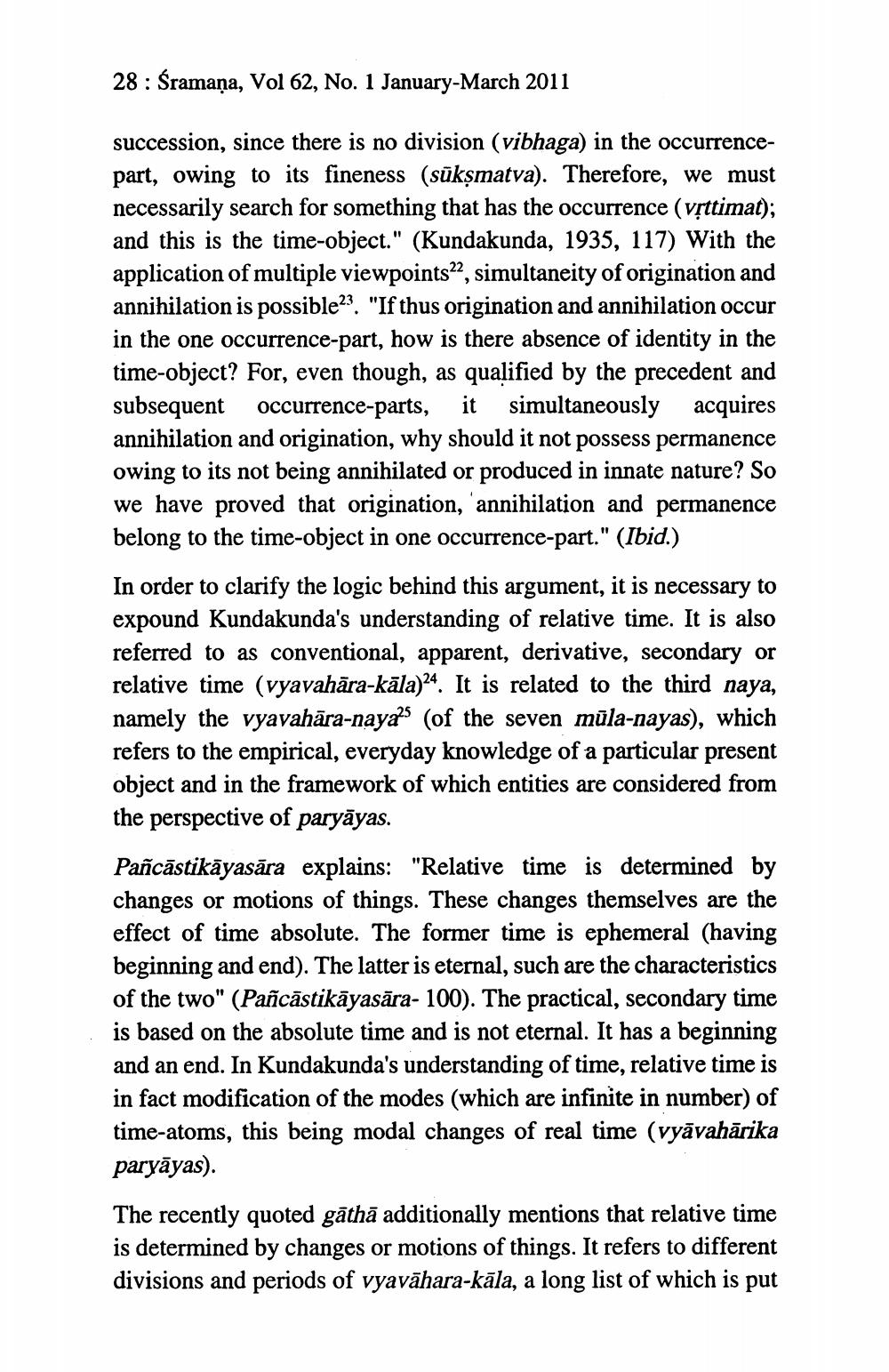________________
28 : Śramaņa, Vol 62, No. 1 January-March 2011
succession, since there is no division (vibhaga) in the occurrencepart, owing to its fineness (sūkṣmatva). Therefore, we must necessarily search for something that has the occurrence (vịttimat); and this is the time-object." (Kundakunda, 1935, 117) With the application of multiple viewpoints22, simultaneity of origination and annihilation is possible23. "If thus origination and annihilation occur in the one occurrence-part, how is there absence of identity in the time-object? For, even though, as qualified by the precedent and subsequent occurrence-parts, it simultaneously acquires annihilation and origination, why should it not possess permanence owing to its not being annihilated or produced in innate nature? So we have proved that origination, 'annihilation and permanence belong to the time-object in one occurrence-part." (Ibid.) In order to clarify the logic behind this argument, it is necessary to expound Kundakunda's understanding of relative time. It is also referred to as conventional, apparent, derivative, secondary or relative time (vyavahāra-kāla)24. It is related to the third naya, namely the vyavahāra-naya?(of the seven mūla-nayas), which refers to the empirical, everyday knowledge of a particular present object and in the framework of which entities are considered from the perspective of paryāyas. Pañcāstikāyasāra explains: "Relative time is determined by changes or motions of things. These changes themselves are the effect of time absolute. The former time is ephemeral (having beginning and end). The latter is eternal, such are the characteristics of the two" (Pañcāstikāyasāra- 100). The practical, secondary time is based on the absolute time and is not eternal. It has a beginning and an end. In Kundakunda's understanding of time, relative time is in fact modification of the modes (which are infinite in number) of time-atoms, this being modal changes of real time (vyāvahārika paryāyas). The recently quoted gāthā additionally mentions that relative time is determined by changes or motions of things. It refers to different divisions and periods of vyavāhara-kāla, a long list of which is put




